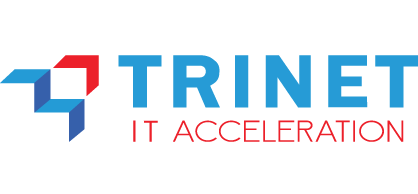Tech Innovation > Security > Deception Technology & Active Threat Defense

Deception Technology & Active Threat Defense
Without this solution, organizations face the following challenges:
Advanced Persistent Threats (APT) Undetected
Advanced Persistent Threats (APT) remain undetected until data is stolen, making it difficult to protect sensitive information.
Malware & Ransomware Spread
Malware and ransomware can spread throughout the network without early warning, causing significant damage before detection.
Security Breach Investigation Challenges
Investigating security breaches is difficult without insight into attacker tactics, making timely responses a challenge.
Regulatory Compliance Difficulties
Difficulty in meeting regulatory compliance such as ISO 27001, GDPR, and PDP Law due to lack of early detection mechanisms.

Key Features & Capabilities
Deception Technology & Active Threat Defense proactively identifies and isolates hidden cyber threats.
Show Details
a. Honeypots & Decoy Systems to Deceive Attackers
- Simulating real assets (servers, databases, workstations, applications) intentionally designed to attract attacks.
- Gathering information on the tactics and tools used by attackers.
b. Lateral Movement Detection & Attack Containment
- Detecting hacker movement within the network before reaching critical assets.
- Isolating threats through traffic redirection and access restriction techniques.
c. Threat Intelligence & Forensics Automation
- Providing in-depth analysis of attack patterns and hacker tactics in real-time.
- Automating incident investigations for faster responses and enhanced security strategies.
d. Zero Trust Adaptive Defense & Automated Response
- Verifying every suspicious activity in the network before granting further access.
- Automatically disconnecting or quarantining risky devices when threats are detected.
e. Seamless Integration with SIEM, SOAR & XDR
- Integrating deception system with Security Information & Event Management (SIEM) for more efficient threat detection.
- Supporting integration with XDR and Managed Detection & Response (MDR) solutions for automated investigations.

Business Benefits
Deception Technology & Active Threat Defense enhance security by detecting and isolating hidden cyber threats.
Show Details
a. Identify Early Attacks Before They Cause Damage
- Traps attackers before they reach actual business systems.
- Helps security teams understand attack patterns and mitigate before escalation.
b. Reduce Risk of Dwell Time & Lateral Movement
- Detects lateral movement in the network to prevent malware & ransomware spread.
- Reduces dwell time from months to minutes, enhancing incident response effectiveness.
c. Enhance Security Without Disrupting Legitimate Users
- Does not disrupt user productivity as deception systems only interact with actual threats.
- Ensures employees can work securely without unnecessary interruptions.
d. Ensure Compliance with Regulations & Security Standards
- Meets data security requirements for ISO 27001, GDPR, PCI DSS, & UU PDP.
- Enables more efficient audits and investigations with a clear attack trail.

Use Cases
Deception Technology & Active Threat Defense offer proactive threat detection and isolation across sectors.
Show Details
a. Banking & Finance
- Redirects Attacks: Redirects attacks targeting banking transactions and online payment systems.
- Real-Time Threat Intelligence: Monitors attack tactics against financial infrastructure & provides real-time threat intelligence.
b. Healthcare Services
- Protects Patient Data: Deceives attackers attempting to steal patient data or access electronic medical records (EMR) systems.
- Prevents Malware Spread: Prevents malware spread targeting hospital systems.
c. E-Commerce & Retail
- Prevents Data Breaches: Detects attacks against customer databases & credit card information before data breaches occur.
- Decoy Login for Attack Detection: Uses decoy logins to detect brute force attacks & credential stuffing.
d. Manufacturing & Supply Chain
- Prevents Industrial Sabotage: Prevents industrial sabotage by detecting hacking attempts against IoT & OT (Operational Technology) systems.
- Detects Malware in Supply Chain: Uses deception assets to identify malware targeting the supply chain.
e. Government & Critical Infrastructure
- Detects State-Sponsored Threats: Detects threats from state-sponsored hacker groups before they attack government systems.
- Ensures Infrastructure Stability: Ensures stability of energy & transportation infrastructure by detecting threats early.

How It Works
Deception Technology & Active Threat Defense detect, deceive, and neutralize advanced cyber threats proactively.
Show Details
a. Decoy & Honeypot Deployment
- Deception System: Creates trap environments that resemble critical assets (servers, databases, applications).
- Detection & Isolation: Hackers attempting to access these systems are detected and isolated.
b. Attack Detection & Behavioral Analysis
- Attack Pattern Analysis: When hackers interact with deception assets, the system analyzes attack patterns and identifies exploitation techniques.
- AI & Machine Learning: Used to learn new attack patterns for improved detection.
c. Threat Intelligence Generation & Automated Alerts
- Threat Data Comparison: Attack information is stored and compared with global threat intelligence.
- Automated Alerts: High-level threats trigger automatic alerts to SOC or SIEM systems.
d. Attack Containment & Automated Response
- Automatic Block/Quarantine: NGFW, XDR, or SOAR can be used to block or quarantine infected devices automatically.
- Incident Reports: Detailed incident reports are generated to assist IT teams with mitigation and security improvement.
Contact our experts for further information












